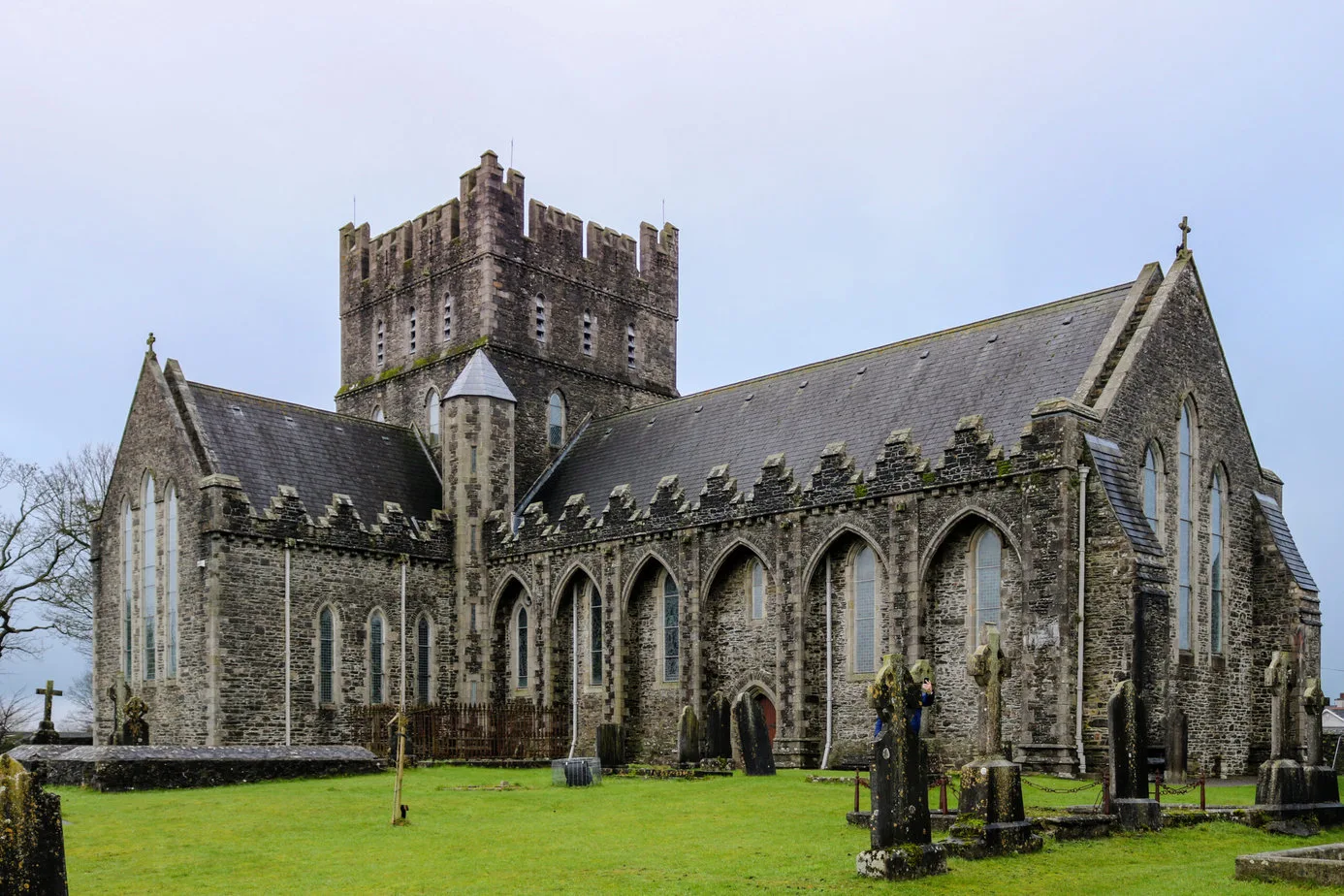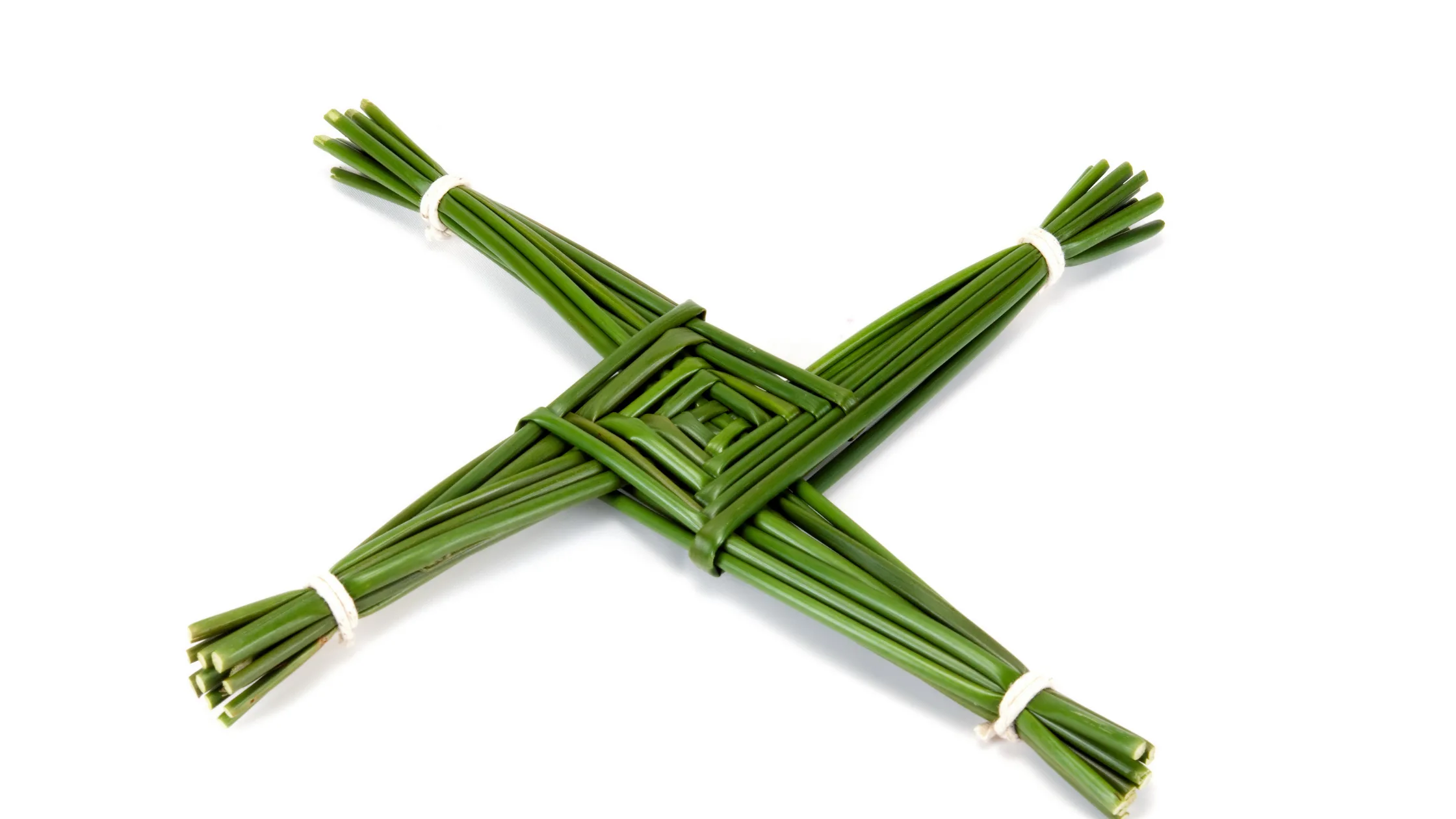Ah, there’s a nip in the Cork air these days, but sure, there’s a glimmer of hope, too! As we turn the calendar to February 1st, we’re not just marking any ordinary day – it’s St. Brigid’s Day is a time when Ireland ushers in the Celtic start of spring.
And let me tell you, it’s a special one this year, as we’re celebrating our very own patron saint with a national bank holiday – the first in Ireland dedicated to a woman. Isn’t that something?
Who Was Brigid? From Pagan Goddess to Christian Saint – St. Brigid’s Day

Now, gather around, for the tale of Brigid is as enchanting as it is ancient. Long before she was venerated as a saint, Brigid was revered as a Celtic goddess. She was the embodiment of poetry, healing, fertility – you name it, Brigid was the goddess of it. A cherished daughter of the Dagda, she was a jewel in the crown of the Tuatha Dé Danann, the otherworldly beings of Irish lore.
As the wheel of the year turned, the Celts celebrated Imbolc, the festival marking the halfway point between the winter solstice and the spring equinox. It was a time to honour Brigid with feasts that would warm the coldest heart and bonfires that lit up the night sky, all in hopes of a bountiful harvest.
St. Brigid of Kildare: The Making of a Saint
Leap forward a few centuries, and you’ll find the story of St. Brigid of Kildare, who was born around 451 AD. From humble beginnings as a slave in Dundalk, she rose through sheer grit and grace to become an abbess and founder of several monasteries, most notably in Kildare.
Her dedication to education and charity was nothing short of extraordinary, and her refusal to be bound by an arranged marriage is the stuff of legend.
Now, St Brigid is arguably the most prolific Irish saint there is. These are some of her accomplishments and aspects of her life:
- Born in Dundalk: Around 451 AD, traditionally believed to be a slave’s daughter.
- Founding of Kildare Abbey: Established the Abbey of Kildare, a centre for religion and learning.
- Pioneering Female Leader: Became one of the first female leaders in the early Irish Christian church, serving as an abbess.
- Promoter of Education and Charity: Known for her commitment to education and helping the poor.
- Miracles and Deeds: Associated with numerous miracles and acts of kindness, such as healing the sick and feeding the poor.
- Creation of the St. Brigid’s Cross: Linked to the creation of the St. Brigid’s Cross, a symbol of protection and faith.
- Dedication to Spiritual Life: Renowned for her devotion to spiritual practice and prayer.
- Refusal of Marriage for Religious Life: She turned down marriage proposals to dedicate her life to religious service.
- Patron Saint of Ireland: Alongside St. Patrick and St. Colmcille, recognized as one of Ireland’s three patron saints.
- Legacy and Veneration: Continues to be venerated in Ireland and worldwide, with many churches and schools named after her.
So yes, she was a busy woman!
The St. Brigid’s Cross: A Symbol of Faith and Tradition ⛪
You may be wondering why or how these woven rushes are a symbol of St Brigid. Well, there is a great story behind them.
Legend has it that the St. Brigid’s Cross was first fashioned by Brigid herself, way back in the 5th century.
Picture this: Brigid, at the bedside of a dying pagan chieftain – some stories whisper it was her own father. The floor is strewn with rushes, perhaps a common sight in those days. As Brigid sits there, she begins to weave these rushes into a cross, her fingers deftly turning the simple strands into a work of profound meaning. As she explained its significance, the dying man found peace and embraced Christianity before his final breath.
The design of this cross is as distinctive as it is symbolic. Typically, it’s a woven cross with a square in the centre and four radials tied at the ends. This isn’t just for show – oh no. The square at the centre is often seen as a symbol of the earth, a nod to the goddess Brigid’s pagan origins, while the cross form represents Christianity. It’s a beautiful fusion of old and new beliefs, much like Ireland herself.
Celebrating St. Brigid Today: A Legacy of Hope and Renewal
Today, St. Brigid is celebrated as one of the three patron saints of Ireland, alongside Patrick(March 17th) and Colmcille. Her story, intertwined with the ancient goddess, continues to inspire and captivate. Whether you’re making a traditional rush cross at St. Brigid’s Well or wearing a beautifully crafted cross around your neck, the spirit of Brigid lives on.
St Brigid’s Day prayer (author unknown)
You were a woman of peace.
You brought harmony where there was conflict.
You brought light to the darkness. You brought hope to the downcast.
May the mantle of your peace cover those who are troubled and anxious,
and may peace be firmly rooted in our hearts and in our world.
Inspire us to act justly and to reverence all God has made.
Brigid you were a voice for the wounded and the weary.
Strengthen what is weak within us. Calm us into a quietness that heals and listens.
May we grow each day into greater wholeness in mind, body and spirit.
Amen.
St Brigid’s Cathedral, Kildare Town
I couldn’t talk about St. Brigid’s Day and how she created one of Ireland’s earliest churches. Steeped in history and spirituality, this sacred site stands as one of Ireland’s earliest Christian places for worship, a beacon of faith that likely shone bright even in the days before Christianity graced our shores. Today, a restored Norman cathedral proudly stands where once was the early Christian foundation and church established by St. Brigid herself.

Right in the beating heart of Kildare town lies St Brigid’s Cathedral, a place not just of stones and stained glass but of deep, spiritual significance. This hallowed spot is one of Ireland’s most sacred ecclesiastical treasures, forever entwined with the legacy of our beloved St. Brigid, Ireland’s most renowned female saint.
Imagine, if you will, the year 453 A.D. – a time when Ireland was beginning to embrace Christianity. It was then that Brigid, a beacon of faith and determination, founded her church in Kildare, merely 35 years after St. Patrick had laid the foundations of the church in Armagh. But mind you, her church wasn’t the grand stone structures we see today. No, it was a humble construction, likely fashioned from the very wood of the land, simple yet filled with devotion.
From this modest beginning sprung the town and, eventually, the county of Cilldara – what we now know as Kildare. In our beautiful Irish tongue, ‘cill’ means a cell or small church, and ‘dara’ refers to the mighty oak. So, it’s believed that Brigid’s first church was nestled in an oak grove or perhaps was even made from the wood of these noble trees. A fitting start, wouldn’t you say, for a saint who would become as steadfast and enduring as the oak itself?”
A Blessing to remember for St Brigid’s day

So, as we prepare to celebrate St. Brigid’s Day, let’s remember the blessing often associated with her cross: “May the blessing of God and the Trinity be on this cross and where it rests and on everyone who looks at it.” And if you’re feeling crafty, why not try your hand at making your own Brigid’s Cross? It’s a bit of fun and a lovely way to connect with this rich tradition.
This video is a great tutorial on just how to make a Brigid Cross. This is the best and easiest tutorial for a Brigid’s Cross that I have seen.
Today, the St. Brigid’s Cross isn’t just a symbol confined to history books or folklore. It’s a living part of Irish culture, a tangible connection to the past that continues to resonate in the modern world. Whether it’s made of rushes, metal, or any other material, the cross remains a potent symbol of faith, resilience, and the enduring spirit of the Irish people.
Crafting these crosses is an Irish tradition held dear, especially on the eve of St. Brigid’s Day. This practice is not just about creating a symbol; it’s about reinforcing a sense of community and connection to Irish heritage.
In Irish homes, these crosses are more than decorative. They are hung over doors and by hearths as talismans of protection, believed to shield the home from harm and bring Brigid’s blessings.
Thanks for reading, and be sure to share this with someone.
Stephen Palmer
P.S. Sign up to my weekly dose of Irish, where I send a free email every Friday.
